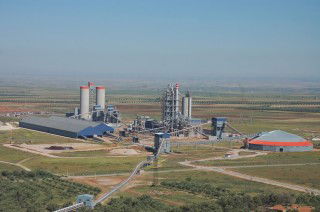As a prelude to our Cemtech Europe 2012 event to be held in Geneva, Switzerland, ICR gives an update on the local cement industry and its innovative outlook on improving all aspects of cement production. One of the most modern cement industries in Europe, Swiss cement producers continue to respond to the challenging limits of sustainable development.
The Swiss economy is performing better than expected according to the government’s expert group who has recently raised its GDP growth forecast from 0.8 to 1.4 per cent for 2012.
However, analysts are aware that preventing an escalation of the sovereign debt crisis in the Euro region is key for continued economic development in the country. Growth fell to 2.1 per cent in 2011 as the Swiss franc appreciated sharply against the euro until the Swiss National Bank (SNB) placed an exchange rate floor between the CHF/euro of 1.2 in September 2011.
Reaching natural limits
To keep its economic development on track, Switzerland will also need to increase its energy output. At present, the country produces a considerable amount of its energy from renewable sources. Around 60 per cent of power is generated by hydroelectrical dams and other renewable sources. However, many experts believe that Switzerland has reached its natural limit for hydropower. The latest initiative is to increase the size of the existing dams like Old Emmosson reservoir dam, which is having its output boosted from 600 to 900MW by increasing the wall height by 21.5m. Raising the capacity of the smaller dams would boost energy supply but at several sites, many environmentalists have voiced their opposition. Therefore, Switzerland will need to find sustainable alternatives.
One option could be nuclear power. At present, nuclear power supplies about 40 per cent of Switzerland’s power requirements although there is political pressure to reduce this after the Fukushima Daiichi disaster. Pending further investigations of the Japanese tragedy, Swiss energy minister Doris Leuthard suspended the approval of three new reactors last year. Switzerland’s five existing nuclear plants, with a 3.2GW combined capacity, are due to close by 2034.
Only five per cent of ‘green’ electricity is produced by renewable sources such as biomass, solar power, wind and ambient heat. Solar energy contributes just 0.1 per cent of electricity needs and Swissolar has been lobbying the government for more funding to develop the industry on the successful German model.
